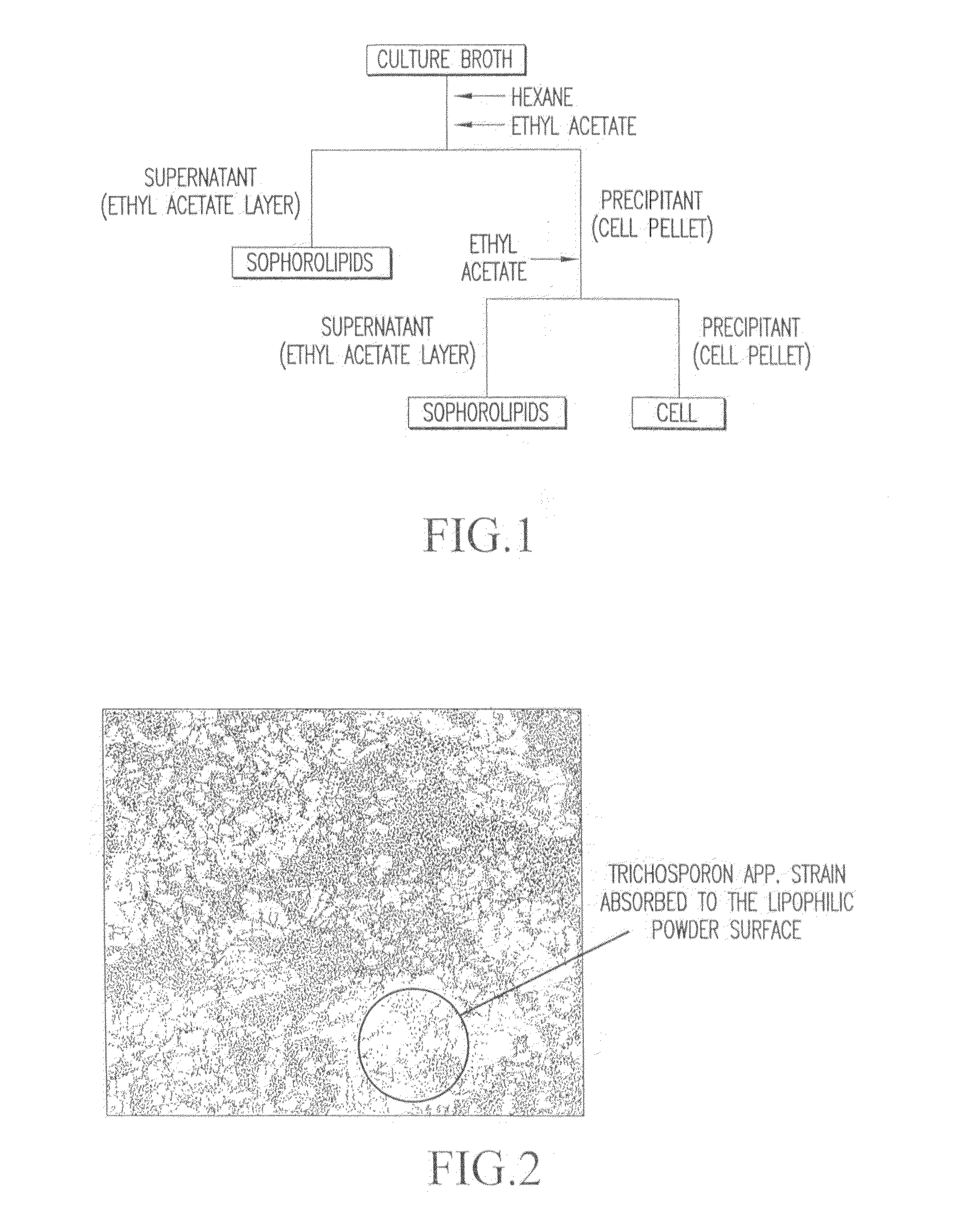Microbial materials for degradation of oils and toxic chemicals
a technology of toxic chemicals and microorganisms, which is applied in the direction of microorganisms, biochemical apparatus and processes, fungi based processes, etc., can solve the problems of difficult to achieve biodegradation by microorganisms, limited applicability, and severe environmental contamination of nearby soil and groundwater, so as to increase the effective surface area for biodegradation, reduce the effect of environmental pollution
- Summary
- Abstract
- Description
- Claims
- Application Information
AI Technical Summary
Benefits of technology
Problems solved by technology
Method used
Image
Examples
experimental example 1
1. Preparation of Contaminated Soil
[0049]Diesel oil and naphtha were mixed in the laboratory to prepare 24 l of a total petroleum hydrocarbon (TPH) solution with a concentration of 10,000 ppm to then be added to 60 l of soil intermittently sterilized at 105° C. twice for 2 hours each time, and uniformly mixed, followed by storage in a sealed container for 24 hours at room temperature, thereby finally preparing contaminated soil. Samples consisting of 4 l volumes of soil taken from the thus prepared contaminated soil were placed in 5 l flasks, and 500 ml of distilled water was then added to each flask and sealed for adjusting an appropriate water content.
2. Treatment of Contaminated Soil
[0050]21 soil samples prepared in the above-described manner were divided into seven treatment groups and 3 trials were performed on each treatment group in the following manner. The containers containing 21 samples were sealed and kept at 15° C. for 2 weeks. Thereafter, soil samples were collected fr...
experimental example 2
[0065]Six samples of soil contaminated by crude oil were collected from six places of different depths in an actual contaminated field-site, sealed, transferred to the laboratory in a low-temperature state, and mixed well.
[0066]Treatments consist of:
[0067]① 220 g of contaminated soil+1.5 ml of sterilized Trichosporon spp. microbial material
[0068]② 220 g of contaminated soil+1.5 ml of Trichosporon spp. microbial material
[0069]{circle around (3)} 220 g of contaminated soil+1.5 ml of Trichosporon spp. microbial material cultivated after being mixed with 0.015 g of lipophilic natural wax powder.
[0070]The thus treated contaminated soils were sealed and stored at room temperature for 7 days, and the number of surviving Trichosporon spp. microorganisms was counted using selective media for Trichosporon spp. microbial strain. The result is shown in Table 4.
[0071]The selective media used were produced from PDA media added with 2 kinds of antibiotics to suppress the growth of indigenous micro...
PUM
| Property | Measurement | Unit |
|---|---|---|
| temperature | aaaaa | aaaaa |
| temperature | aaaaa | aaaaa |
| pressure | aaaaa | aaaaa |
Abstract
Description
Claims
Application Information
 Login to View More
Login to View More - R&D
- Intellectual Property
- Life Sciences
- Materials
- Tech Scout
- Unparalleled Data Quality
- Higher Quality Content
- 60% Fewer Hallucinations
Browse by: Latest US Patents, China's latest patents, Technical Efficacy Thesaurus, Application Domain, Technology Topic, Popular Technical Reports.
© 2025 PatSnap. All rights reserved.Legal|Privacy policy|Modern Slavery Act Transparency Statement|Sitemap|About US| Contact US: help@patsnap.com


